#chandra observatory
Text
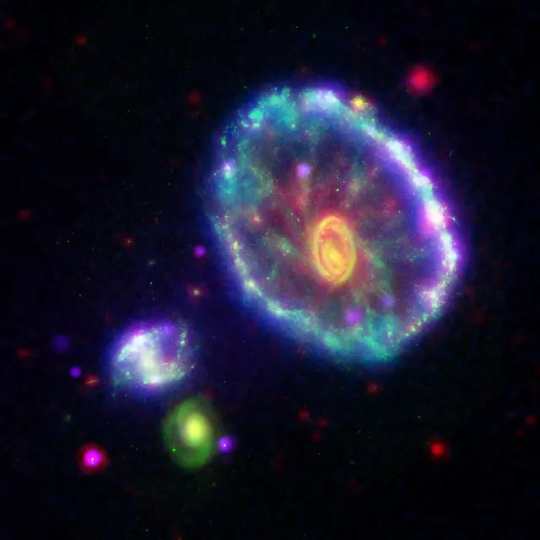
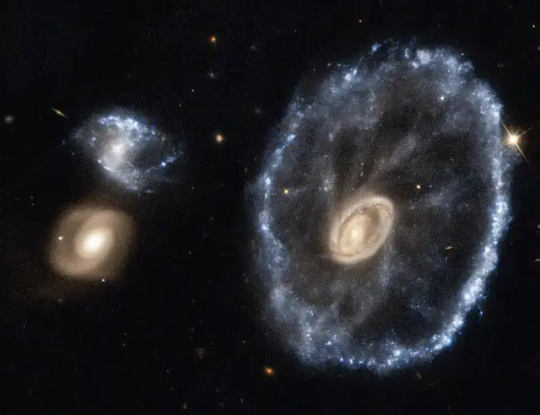

Stellar ripples of Cartwheel galaxy ©
#nasa#chandra observatory#spitzer#space#astrophotography#hubble telescope#stars#cartwheel galaxy#planet#galaxy#solar system#astronomy#cosmos#universe#webb#jwst
2K notes
·
View notes
Text

Christmas Tree Cluster l Chandra Observatory
#happy christmas#nasa#Chandra observatory#space#astrophotography#astronomy#universe#stars#christmas tree cluster#ngc 2264#solar system
428 notes
·
View notes
Text
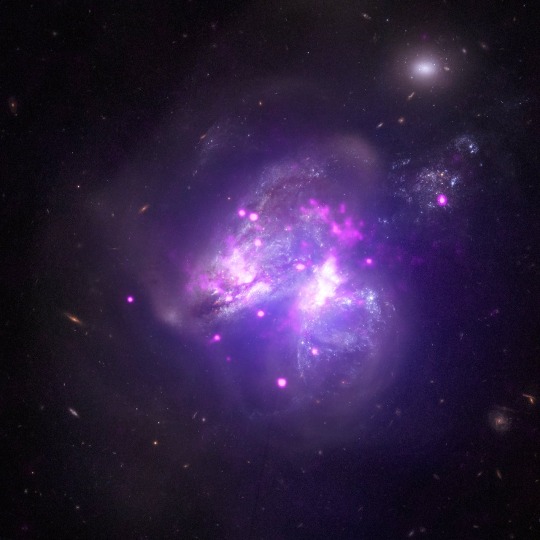
💫 “Today Chandra is studying a Black Hole in Ursa Major. Nearby in the sky two galaxies are merging in Arp 299. At least 14 "ultra-luminous X-ray sources" (ULXs) have been discovered here. All are likely black holes or neutron stars pulling material from a companion star.”
source . more from chandra x-ray observatory .
#space#chandra#chandra observatory#chandra x ray observatory#nasa#outer space#black hole#Ursa Major#constellations#neutron stars#stars#neutron star#galaxy#galaxies#space photography#astronomy
93 notes
·
View notes
Text

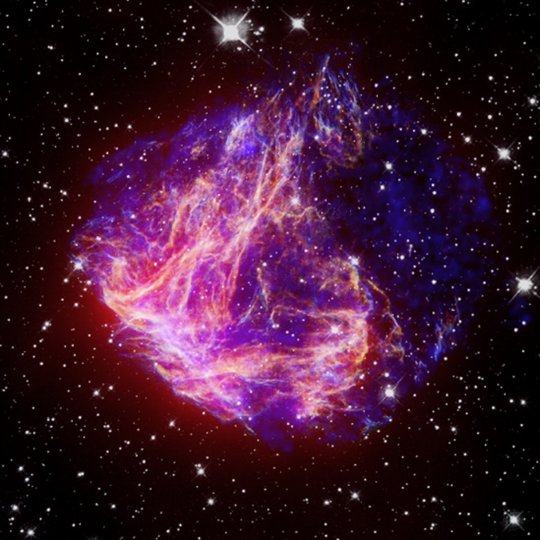
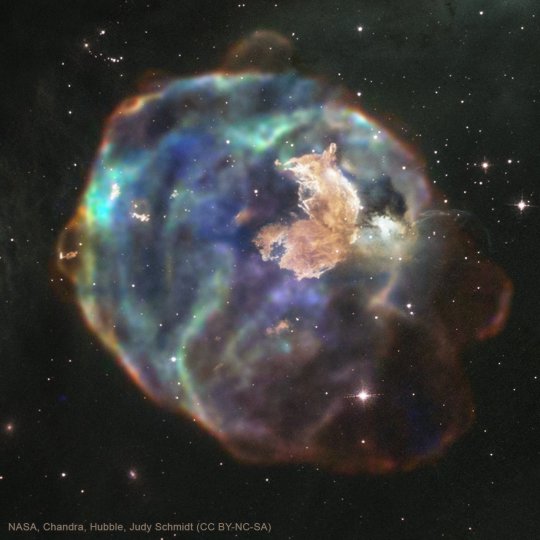
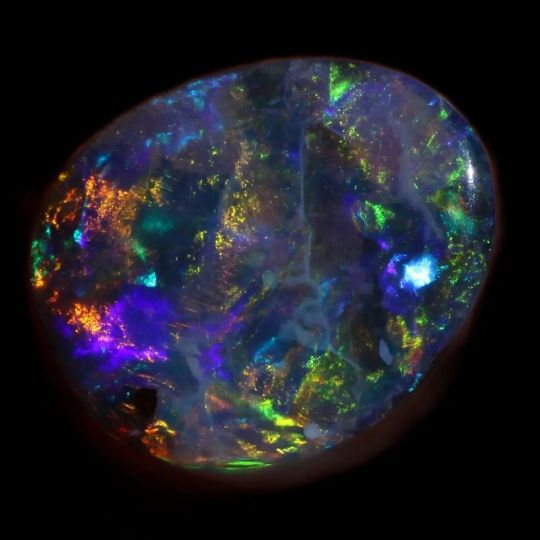




Supernova Remnants © Chandra
by koroit.opal
#i just#liked the similarities#anyhow#chandra observatory#nasa#opals#geology#supernova#supernova remnant
131 notes
·
View notes
Photo

Cassiopeia A
Composite images of the Cas A supernova remnant, a structure resulting from the explosion of a star in the Cassiopeia constellation. The blues represent data from the Chandra Observatory, the turquoise is from NASA's Imaging X-ray Polarimetry Explorer (called IXPE), and the gold is courtesy of the Hubble Telescope.
#james webb telescope#james webb photos#chandra observatory#imaging x-ray polarimetry explorer#hubble telescope#cassiopeia a#cassiopeia constellation#supernova#nasa#nasa picture of the day#space#astronomy#beauty#beautiful#pretty#amazing
43 notes
·
View notes
Text
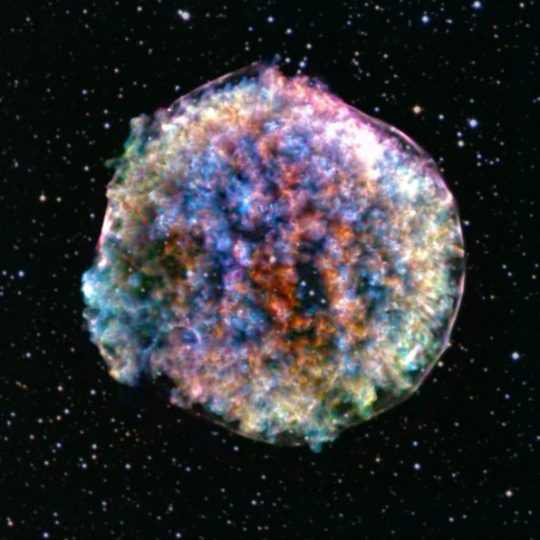
Tycho’s Supernova Remnant.
Cassiopeia Constellation.
Chandra X-Ray Observatory.
#tycho#supernova#supernova remanent#cassiopeia constellation#chandra observatory#x ray#space#galaxy#cosmos
5 notes
·
View notes
Text
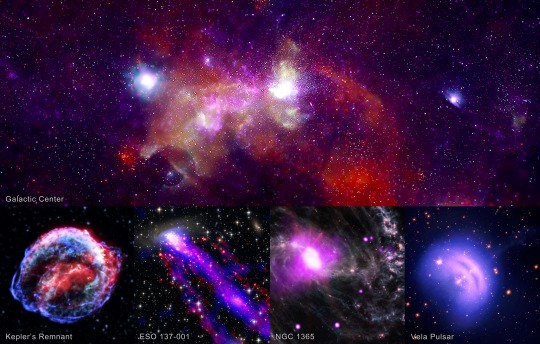
She's givingggg...
Electric Touch (feat. Fall Out Boy) (Taylor's Version) (From The Vault)


Especially the Vela Pulsar and NGC 1365
Honorable mention because it's not quite on theme because it's not purple enough for this silly post but is the prettiest in my opinion: Kelper's Supernova Remnant
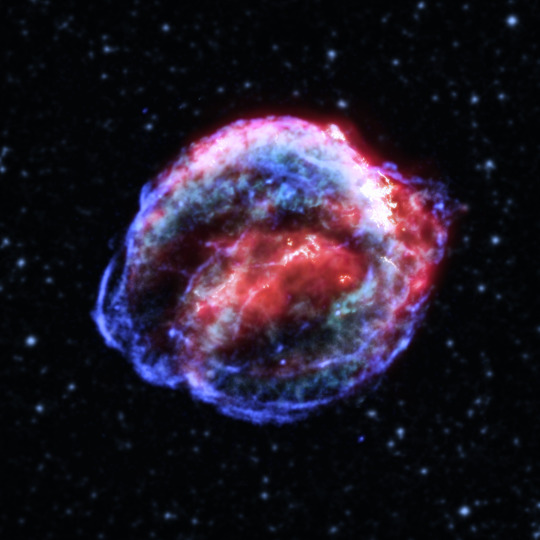
Source: NASA 💜 References: @taylorswift @taylornation @nasa
#taylor swift#speak now#taylors version#from the vault#fall out boy#speak now aesthetic#nasa#hubble#chandra observatory#hubble space telescope#vela pulsar#kelper supernova#galaxy#astronomy#astrophotography#taylurking#taylornation#Spotify
1 note
·
View note
Text
Scientists have discovered the oldest black hole yet, a cosmic beast formed a mere 470 million years after the Big Bang.
The findings, published Monday, confirm what until now were theories that supermassive black holes existed at the dawn of the universe. NASA's James Webb Space Telescope and Chandra X-Ray Observatory teamed up over the past year to make the observations.
Given the universe is 13.7 billion years old, that puts the age of this black hole at 13.2 billion years.
Even more astounding to scientists, this black hole is a whopper—10 times bigger than the black hole in our own Milky Way.
Continue Reading.
174 notes
·
View notes
Text

A “Green Monster” Lurks in Star’s Debris
For the first time, astronomers have combined data from NASA’s Chandra X-ray Observatory and James Webb Space Telescope to study the well-known supernova remnant Cassiopeia A (Cas A). This work has helped explain an unusual structure in the debris from the destroyed star called the “Green Monster,” because of its resemblance to the wall in the left field of Fenway Park.
Image Credit: X-ray: NASA/CXC/SAO; Optical: NASA/ESA/STScl; IR: NASA/ESA/CSA/STScl/Milisavljevic et al., NASA/JPL/CalTech; Image Processing: NASA/CXC/SAO/J. Schmidt and K. Arcand
#art#cosmos#cosmic#universe#blast#space#photography#stars#monster#green#debris#chandra x ray observatory#james webb space telescope#supernova#cassiopeia#casA
64 notes
·
View notes
Text


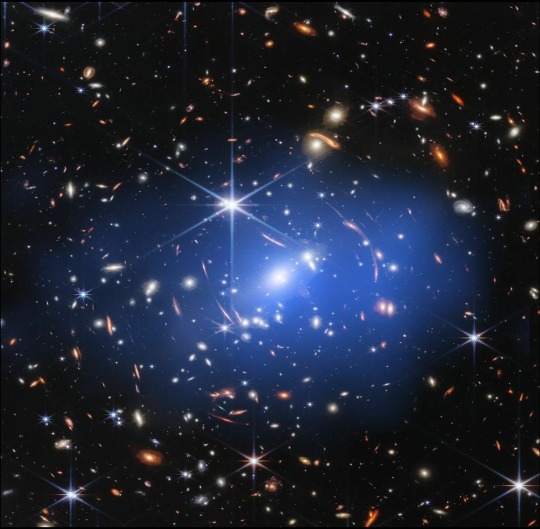
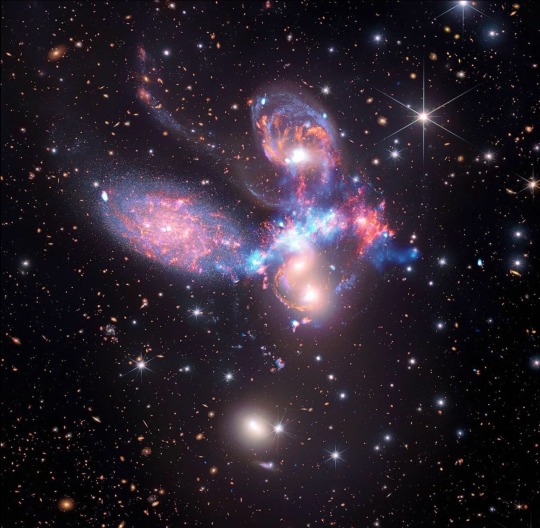
webb's infrared meets chandra's x-ray! technology is amazing <333
#nasa#jwst#james webb photos#james webb space technology#james webb update#james webb images#james webb telescope#chandra x ray observatory#space#outer space#galaxy#stars#sky#astronomy#stephan's quintet#cartwheel galaxy#deep field#carina nebula#aesthetic
958 notes
·
View notes
Text

"This new image of NGC 2264, also known as the 'Christmas Tree Cluster,' shows the shape of a cosmic tree with the glow of stellar lights. NGC 2264 is, in fact, a cluster of young stars — with ages between about one and five million years old — in our Milky Way about 2,500 light-years away from Earth. The stars in NGC 2264 are both smaller and larger than the Sun, ranging from some with less than a tenth the mass of the Sun to others containing about seven solar masses.
This new composite image enhances the resemblance to a Christmas tree through choices of color and rotation. The blue and white lights (which blink in the animated version of this image) are young stars that give off X-rays detected by NASA’s Chandra X-ray Observatory. Optical data from the National Science Foundation’s WIYN 0.9-meter telescope on Kitt Peak shows gas in the nebula in green, corresponding to the 'pine needles' of the tree, and infrared data from the Two Micron All Sky Survey shows foreground and background stars in white. This image has been rotated clockwise by about 160 degrees from the astronomer’s standard of North pointing upward, so that it appears like the top of the tree is toward the top of the image.

Young stars, like those in NGC 2264, are volatile and undergo strong flares in X-rays and other types of variations seen in different types of light. The coordinated, blinking variations shown in this animation, however, are artificial, to emphasize the locations of the stars seen in X-rays and highlight the similarity of this object to a Christmas tree. In reality the variations of the stars are not synchronized.
The variations observed by Chandra and other telescopes are caused by several different processes. Some of these are related to activity involving magnetic fields, including flares like those undergone by the Sun — but much more powerful — and hot spots and dark regions on the surfaces of the stars that go in and out of view as the stars rotate. There can also be changes in the thickness of gas obscuring the stars, and changes in the amount of material still falling onto the stars from disks of surrounding gas.
NASA’s Marshall Space Flight Center manages the Chandra program. The Smithsonian Astrophysical Observatory’s Chandra X-ray Center controls science operations from Cambridge, Massachusetts, and flight operations from Burlington, Massachusetts."
Date: December 19, 2023
NASA ID: link
#NGC 2264#Christmas Tree Cluster#Space#Galaxy#NASA#December#2023#gif#Chandra X-ray Observatory#X-ray Observatory#Chandra#Marshall Space Flight Center#MSFC#Huntsville#Alabama#my post
60 notes
·
View notes
Photo
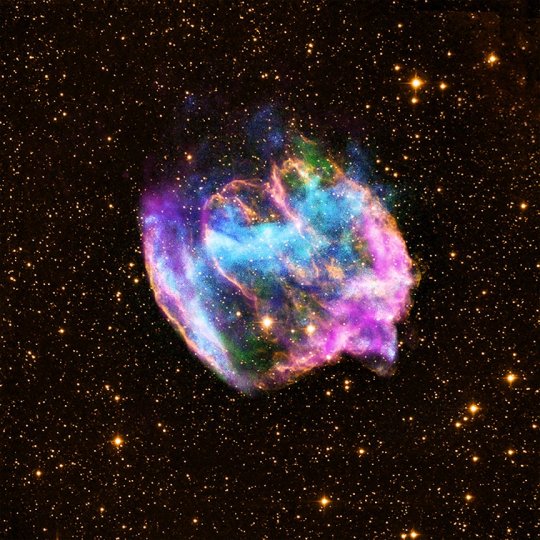
W49B, a supernova remnant © Chandra
#nebula#supernova remnant#nasa#chandra observatory#astrophotography#universe#stars#night sky#planet#astronomy#galaxy#cosmos#solar system#planets
3K notes
·
View notes
Text


Stephan's Quintet + Cartwheel Galaxy 🪐⊹ ࣪˖* ·
145 notes
·
View notes
Text
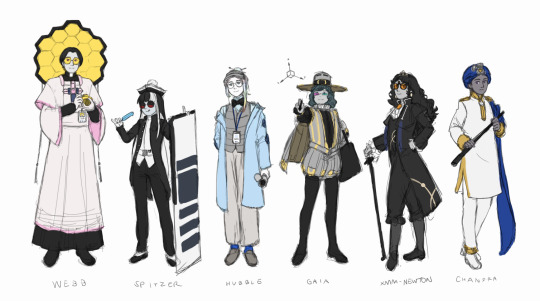
Telescopes 👀😶
#space#character design#gijinka#personification#nasa#esa#space telescope#oh boy time to tag everybody hang tight#jwst#james webb space telescope#spitzer space telescope#hubble#esa gaia#xmm-newton#chandra x ray observatory#religious imagery#priests#christian imagery#thanks webb#artists on tumblr
207 notes
·
View notes
Text

In 2009, NASA overlaid matching images from Hubble, Spitzer, and the Chandra X-ray Observatory to produce this incredible image highlighting each of the telescopes' different wavelength views of the center of our Milky Way galaxy.
"In this spectacular image, observations using infrared light and X-ray light see through the obscuring dust and reveal the intense activity near the galactic core. Note that the center of the galaxy is located within the bright white region to the right of and just below the middle of the image. The entire image width covers about one-half a degree, about the same angular width as the full moon." - NASA
(©)
#go for queue deploy#nasa#nasa hubble telescope#hubble#spitzer#nasa spitzer#nasa chandra#chandra x ray observatory#astronomy#astrophotography#galaxy#nebula#stars#cosmos#cosmic
377 notes
·
View notes
Text



24 December 2023
💚🎄💚
#NASA#Christmas Tree Cluster#Christmas Tree#stars#space#galaxy#universe#cosmos#Christmas#Christmas Eve#Chandra X-ray Observatory#space telescope#space observatory#X-ray astronomy
35 notes
·
View notes